Field Research #1 – Alun-Alun & Pabrik Kunir
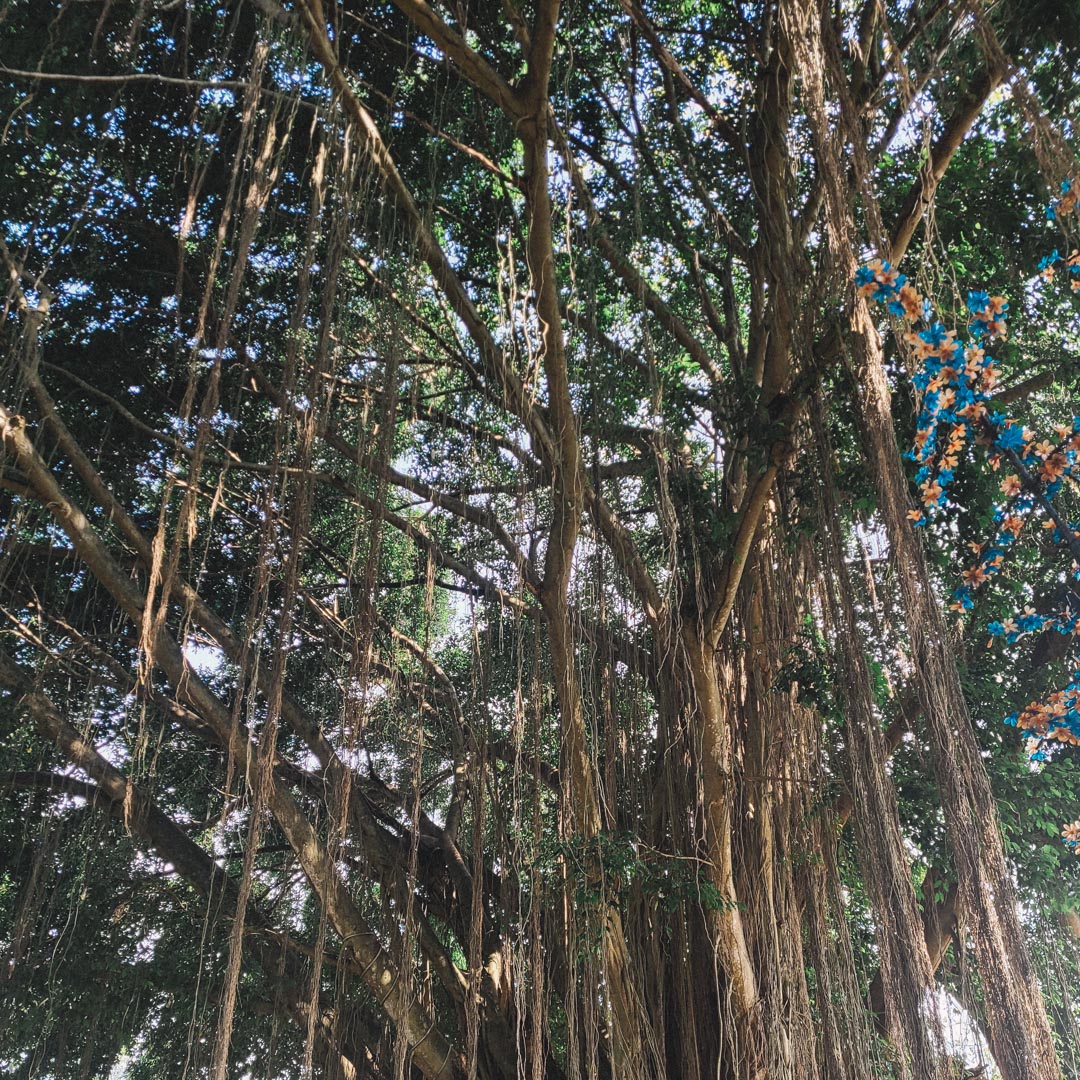
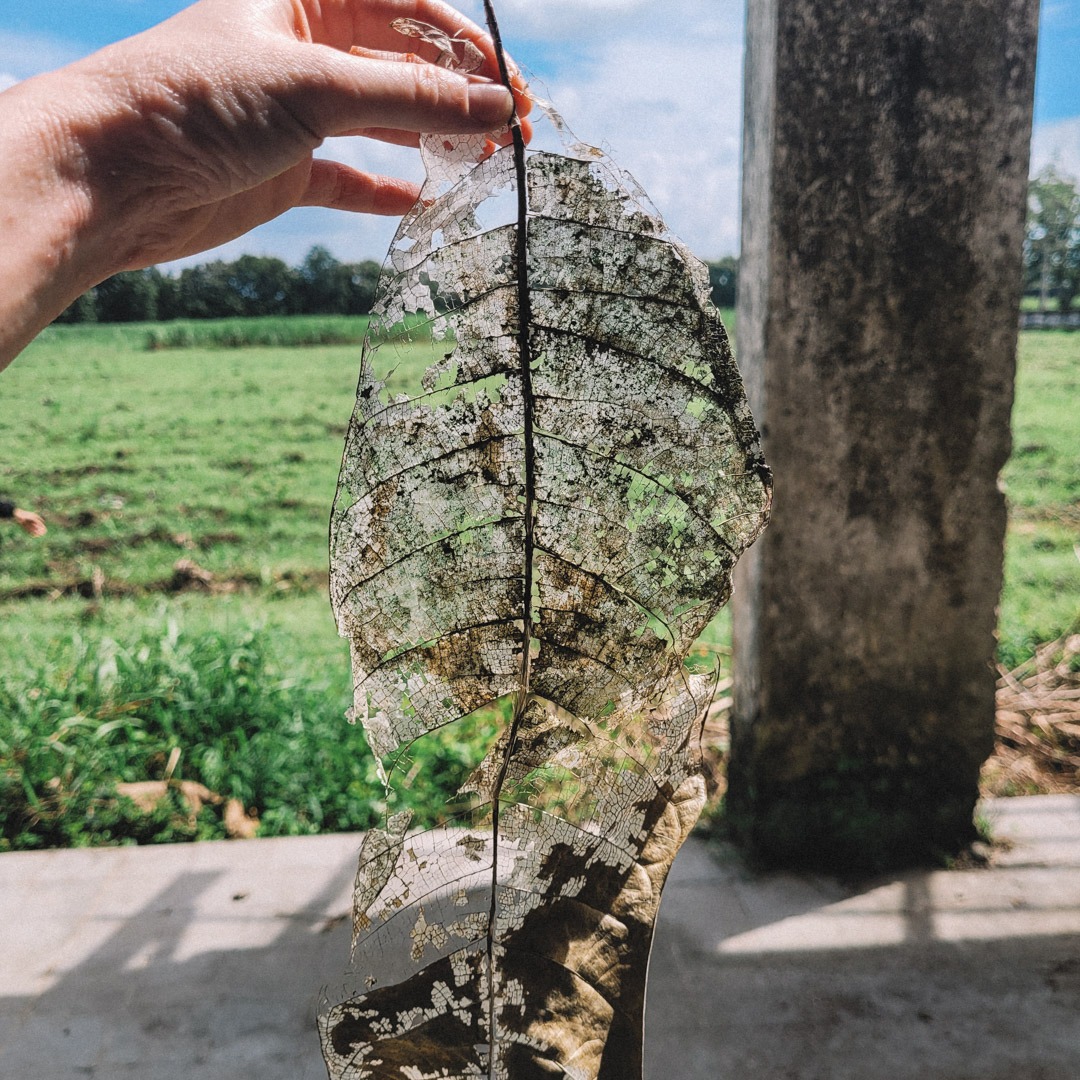
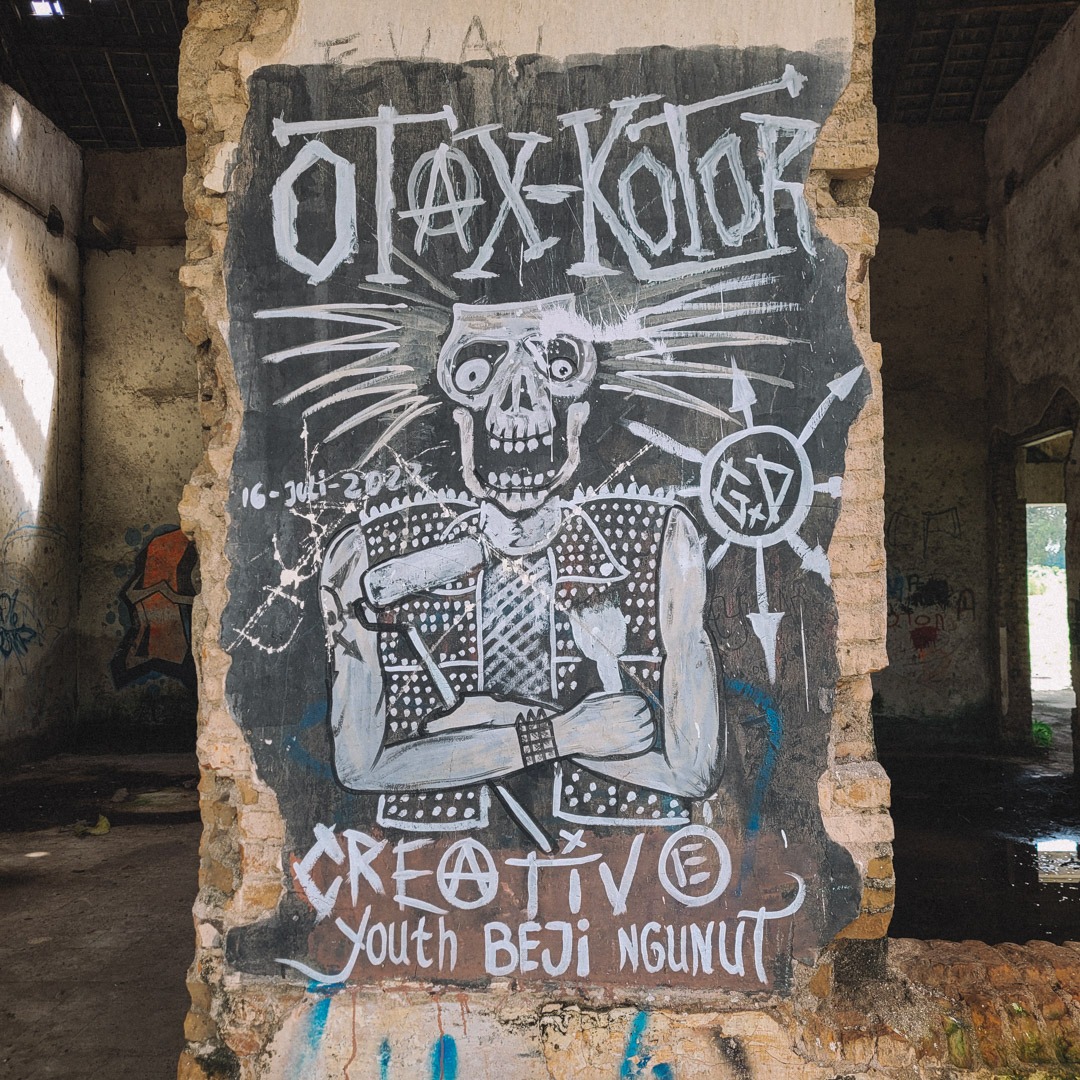
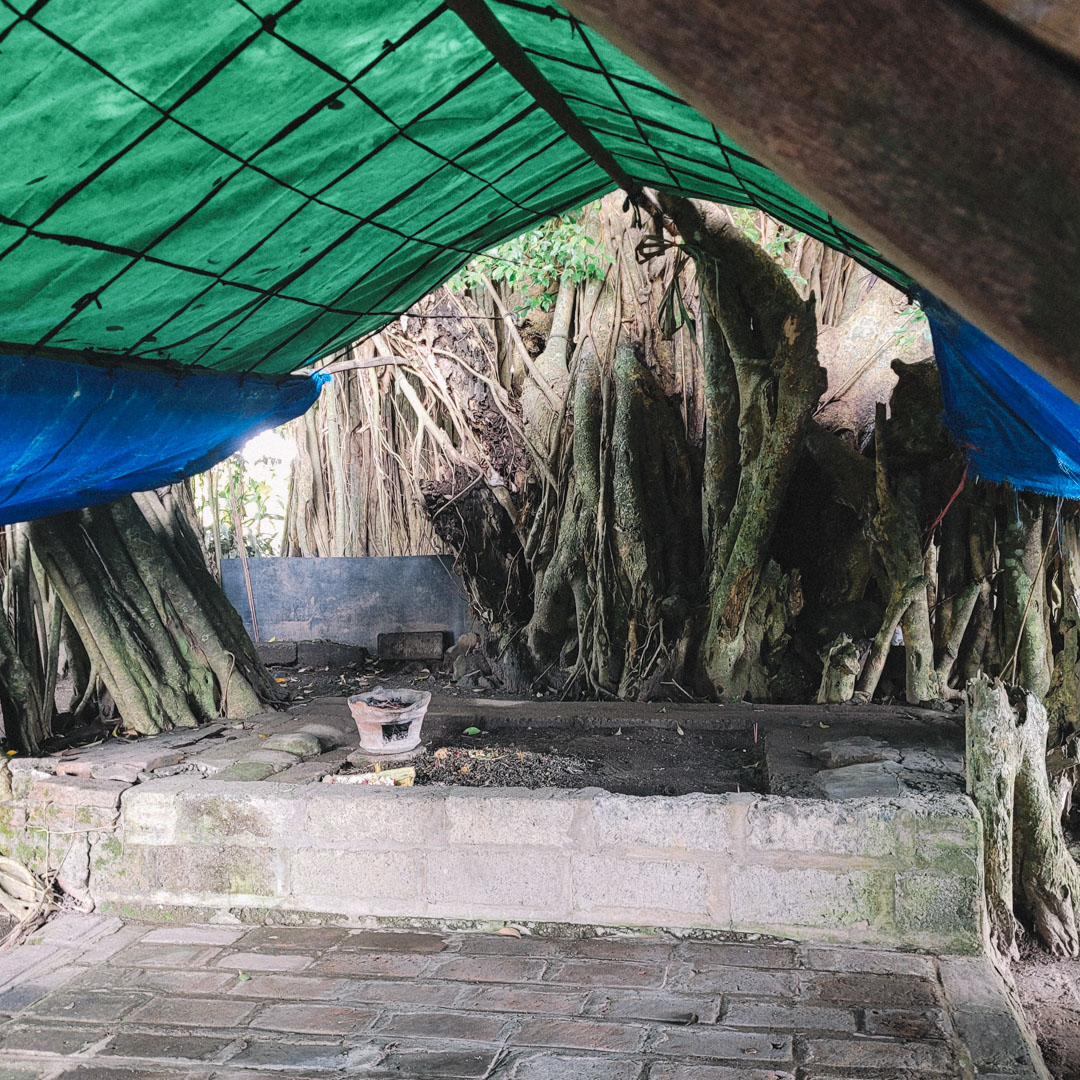

Minggu ini kami memulai perjalanan menelusuri cerita dan arsip terkait Ringin Kurung dan banjir Tulungagung. Tentu saja tempat pertama yang harus kami kunjungi adalah Alun-Alun Tulungagung, pusat kota, yang menjadi tempat penanaman 7 pohon beringin. Menelusuri dan menghitung jumlah beringin, kami merasa telah menemukan ketujuh beringin tersebut. Di dalam alun-alun terdapat 6 beringin: 4 beringin besar di setiap sudutnya dan 2 beringin lebih kecil di utara air mancur. Satu pohon beringin besar di Taman Kartini (depan pagar pendopo) melengkapinya menjadi 7. Tapi kami masih bertanya-tanya karena ada 1 beringin lagi di sudut Balai Rakyat (sekarang Mal Pelayanan Publik). Kami simpan pertanyaan itu hingga agenda pertemuan dengan beberapa informan yang sudah diagendakan. Yang kami amini penting dalam perjalanan pembukaan riset ini adalah pengalaman mata dan tubuh terhadap objek utama dari project The Trees & The Wires ini, terutama bagi Ella yang baru pertama kali mengunjungi Alun-Alun Tulungagung.
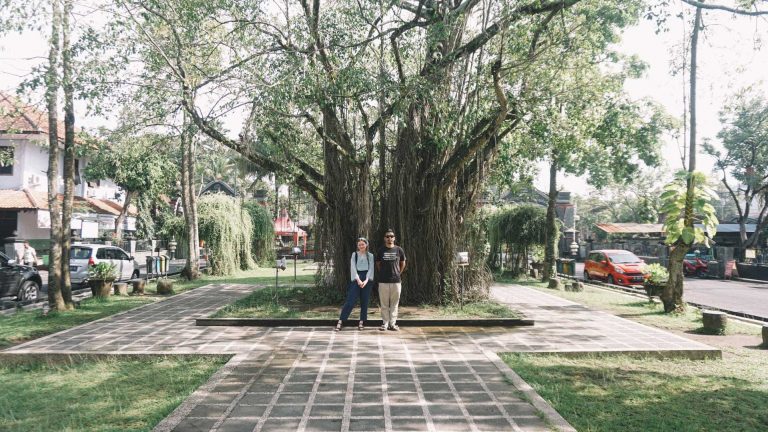
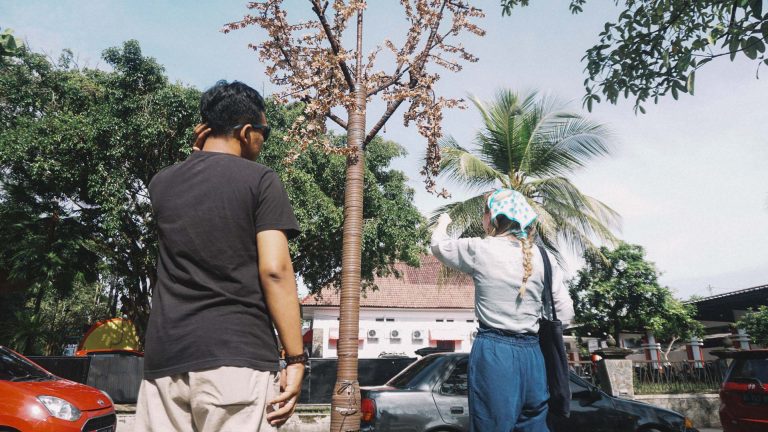

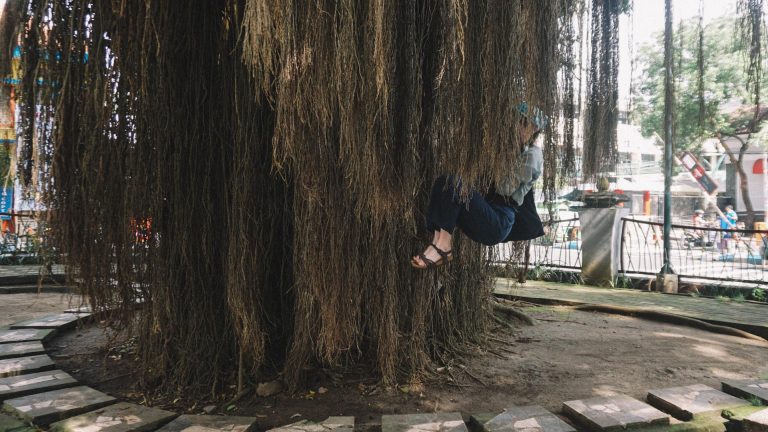
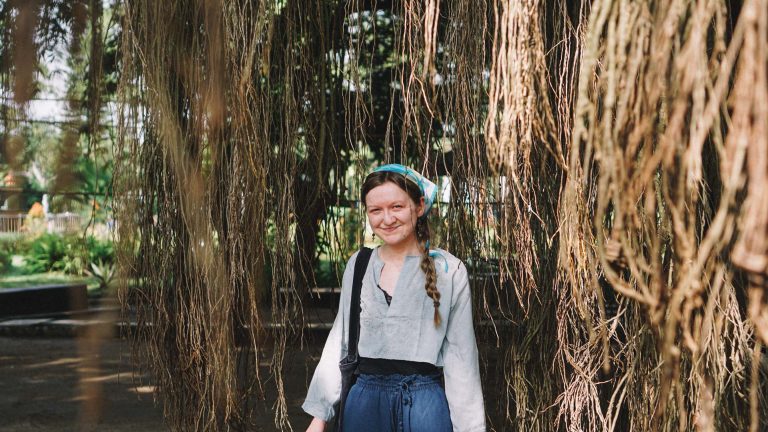
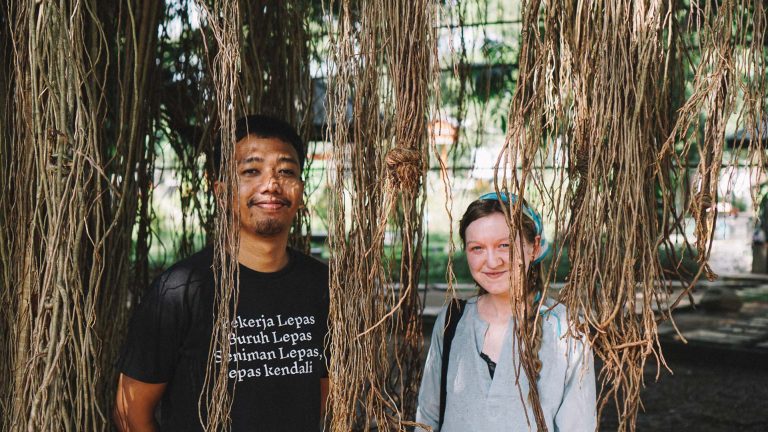
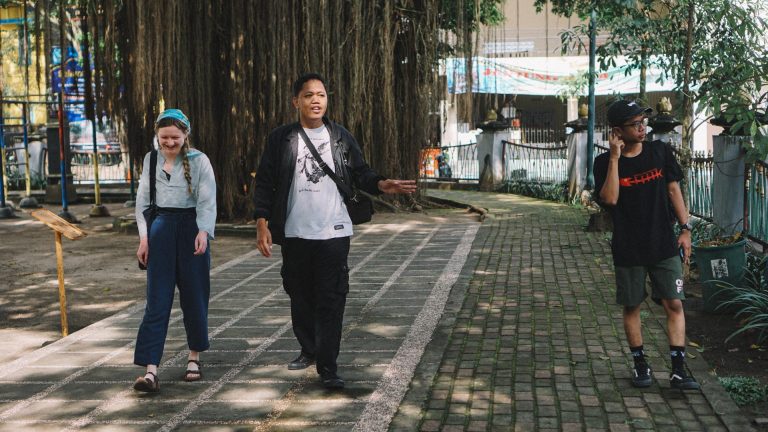
Setelah dari alun-alun, tujuan kami berikutnya adalah Eks-Pabrik Gula Kunir, Ngunut. Mungkin tidak berkaitan langsung dengan Ringin Kurung, tapi kami merasa bangunan-bangunan peninggalan masa kolonialisme Belanda tersebut menjadi situs yang tepat untuk menceritakan konteks sejarah, sosial, dan budaya Tulungagung. Rumah-rumah peninggalan Belanda yang dialihfungsikan menjadi coffee shop, yang sempat populer beberapa tahun ke belakang, menunjukkan ruang hidup yang mengalami beberapa kali redefinisi. Hingga yang terakhir menunjukkan bagaimana ruang-ruang tersebut dimaknai sebagai coffee shop berikut berbagai praktik sosial yang terjadi di dalamnya.
Kenapa tidak menggunakan warung kopi sebagai terjemahan coffee shop? Karena pada praktiknya, kedua istilah tersebut dimaknai berbeda. Tulungagung, sebagai kota warung kopi, mungkin bukan sebuah hiperbola jika disebutkan bahwa ada 1 warung kopi di setiap RT (Rukun Tetangga). Warung kopi ini seperti warung biasa, menjual kopi seduh, minuman instant, jajanan, dan makanan (biasanya nasi bungkus). Satu ciri khas warung kopi di Tulungagung biasanya menyediakan menu kopi ijo (kopi dengan campuran kacang hijau yang bubuk kopinya sangat halus). Kopi ijo ini digunakan untuk nyete (mengoleskan endapan kopi ke permukaan rokok). Nyethe ini bisa disebut sebagai produk budaya visual dari kota Tulungagung. Karena tak sekadar dioleskan, beberapa orang menggambar (kebanyakan membuat pola) pada batang rokoknya. Aktivitas ngopi dan nyethe ini menjadi aktivitas yang sering dilakukan masyarakat Tulungagung dalam berbagai kesempatan, mulai dari sebelum berangkat ke sawah; berangkat kerja; atau sekadar nongkrong.
Sementara coffee shop, lebih merujuk kepada warung kopi kekinian yang menjamur pasca film Filosofi Kopi. Tak hanya menjual beragam jenis kopi berikut cara membuatnya, secara arsitektur dan interior pun warung kopi jenis ini juga lebih beragam. Berbagai gaya arsitektur digunakan, mulai dari industrial; skandinavian; minimalis; dsb. Kehadiran warung kopi jenis ini merubah konstruksi ruang-ruang untuk menikmati kopi tersebut. Sebagai contoh, sebelum era coffe shop dimulai, warung kopi seakan menjadi tempat yang tabu untuk didatangi oleh perempuan. Coffee shop ini kemudian hadir memberikan ruang yang aman untuk semua gender. Pergeseran dimulai di sini, dewasa ini tak lagi tabu bagi perempuan untuk mendatangi warung kopi.
Kembali pada Pabrik Kunir, terdapat satu bangunan yang terbengkalai, tak ada lagi pintu dan jendela, tetapi banyak sekali seni visual di tembok-temboknya. Ruang ini pun turut dialihfungsikan oleh masyarakat sekitar, terutama kaum muda, sebagai ruang yang aman untuk melakukan aktivitas yang dibatasi oleh norma, agama, dan negara. Di bangunan ini, seni jalanan yang saat ini memiliki pilihan: antara dilarang atau dimanfaatkan pariwisata, memiliki media yang bebas dan luas, tanpa harus cemas diawasi oleh CCTV sebagai perpanjangan mata negara. Tempat ini juga memungkinkan aktivitas terlarang lainnya seperti mengonsumsi alkohol, yang biasanya hanya bisa dinikmati di tempat-tempat eksklusif dan mahal.
Masih di area pabrik kunir terdapat juga pohon beringin besar lengkap dengan tempat persembahan. Tempat yang suci dan sakral bagi orang-orang yang menghayati suatu kepercayaan tertentu. Untuk itulah perjalan kami ke Eks-Pabrik Gula Kunir ini dirasa menjadi pilihan yang paling tepat karena bagasi pengetahuan lokal ini bisa dibagikan dan didiskusikan bersama seniman residensi kami. Dari situs inilah, Ella mulai memasuki cara pandang yang sama, tentu dengan komparasi pengalaman hidup di wilayahnya berasal.
– Benny Widyo
This week we embarked on a journey through the stories and archives related to Ringin Kurung and the Tulungagung floods. Of course, the first place we had to visit was Alun-Alun Tulungagung, the city centre, where seven banyan trees were planted. Tracing and counting the number of banyan trees, we felt we had found all seven. Inside the square there are 6 banyan trees: 4 large ones at each corner and 2 smaller ones in the north of the fountain. One large banyan tree in Kartini Park (in front of the Pendopo fence) brings the total to seven. But we’re still wondering because there’s also one banyan at the corner of Balai Rakyat (now the Public Service Mall). We save that question until the scheduled meeting with several informants. What we agree is important in this opening research trip is the experience of the eyes and body towards the main object of The Trees & The Wires project, especially for Ella who visited Alun-Alun Tulungagung for the first time.
After the Alun-Alun, our next destination was the Former-Sugar-Factory Kunir, Ngunut. It may not be directly related to Ringin Kurung, but we felt that the buildings linked to the Dutch colonialism era were the right site to tell the historical, social and cultural context of Tulungagung. Dutch houses converted into coffee shops, which have become popular in recent years, show how living spaces have been redefined several times. Finally, it shows how these spaces are interpreted as coffee shops and the various social practices that occur within them.
Why not use warung kopi as a translation of coffee shop? Because in practice, the two terms are interpreted differently. Tulungagung, as a city of warung kopi, may not be a hyperbole if it is mentioned that there is one warung kopi in every neighbourhood. These coffee stalls are like ordinary stalls, selling brewed coffee, instant drinks, snacks and food. One characteristic of coffee stalls in Tulungagung is that they usually serve kopi ijo (green coffee — coffee with a mixture of green beans and very fine coffee powder). This kopi ijo is used for nyete (applying coffee sediment to the surface of cigarettes). Nyethe is a visual cultural product of Tulungagung. Because it is not just smeared, some people draw (mostly making patterns) on their cigarettes. This coffee and nyethe activity has become an activity that is often carried out by the people of Tulungagung on various occasions, ranging from before going farming; work; or just hanging out.
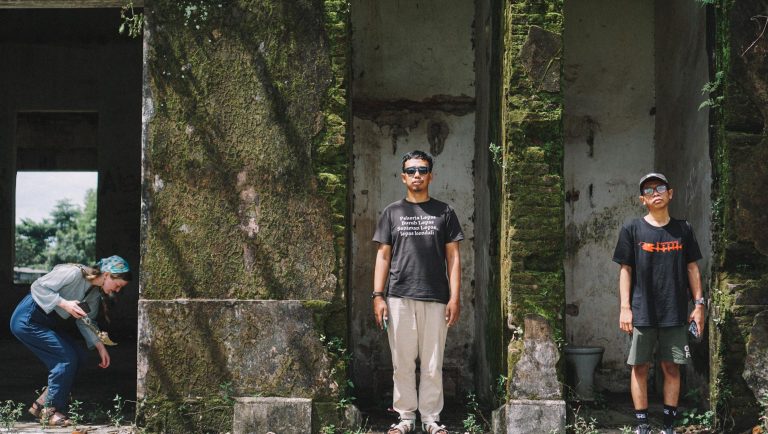
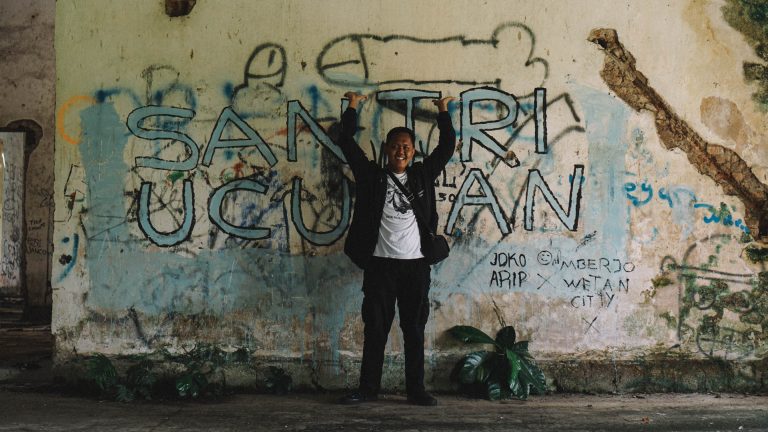
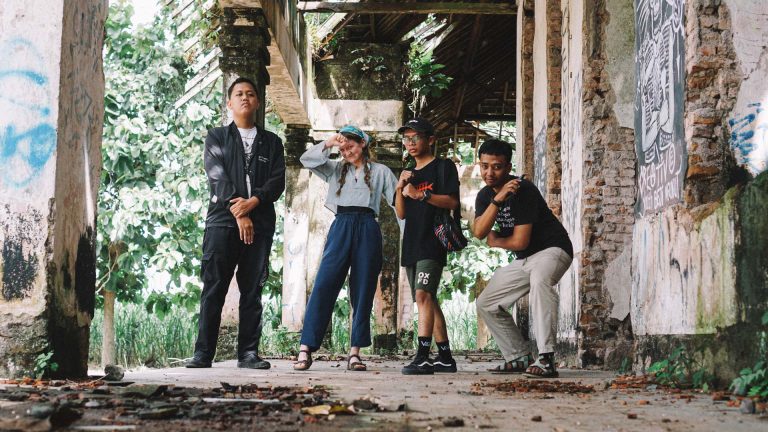
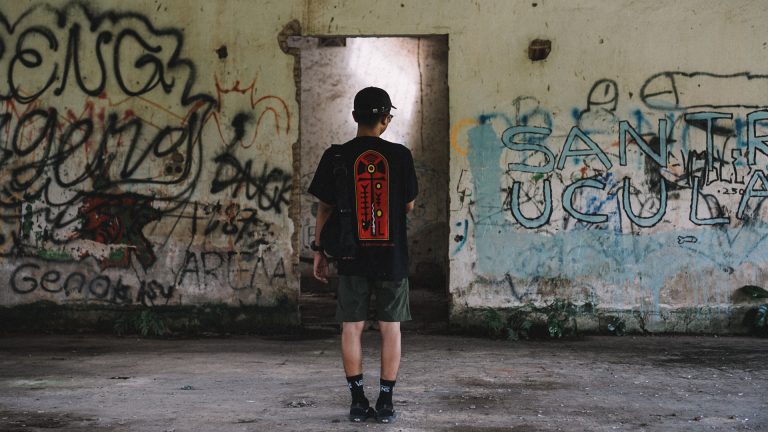
Coffee shop, on the other hand, refers more to the contemporary coffee shops that mushroomed after the film Filosofi Kopi. Not only do they sell various types of coffee and how to make them, the architecture and interior of this type of coffee shop are also more diverse. Various architectural styles are used, ranging from industrial; Scandinavian; minimalist; etc. The presence of this type of coffee shop changes the construction of coffee shops. The presence of this type of coffee shop changes the construction of spaces to enjoy the coffee. For example, before the coffee shop era began, coffee shops seemed to be a taboo place for women to visit. This coffee shop then comes to provide a safe space for all genders. The shift begins here, today it is no longer taboo for women to visit warung kopi.
Back at the Kunir Factory, there is an abandoned building, no more doors and windows, but lots of visual art on the walls. This space has also been converted by the surrounding community, especially young people, as a safe space to conduct activities that are restricted by norms, religion and the state. In this building, street art, which currently has a choice: between being banned or utilised by tourism, has a free and wide media, without having to worry about being watched by CCTV as an extension of the state’s eyes. This place also allows other forbidden activities such as consuming alcohol, which can usually only be enjoyed in exclusive and expensive places.
Still in the area of the kunir factory there is also a large banyan tree complete with an offering place. A holy and sacred place for people who live a certain belief. For this reason, our trip to the Former-Sugar-Factory Kunir felt like the most appropriate choice because this baggage of local knowledge could be shared and discussed with our artists-in-residence. From this site, Ella began to enter the same perspective, of course with a comparison of life experiences in her home region.